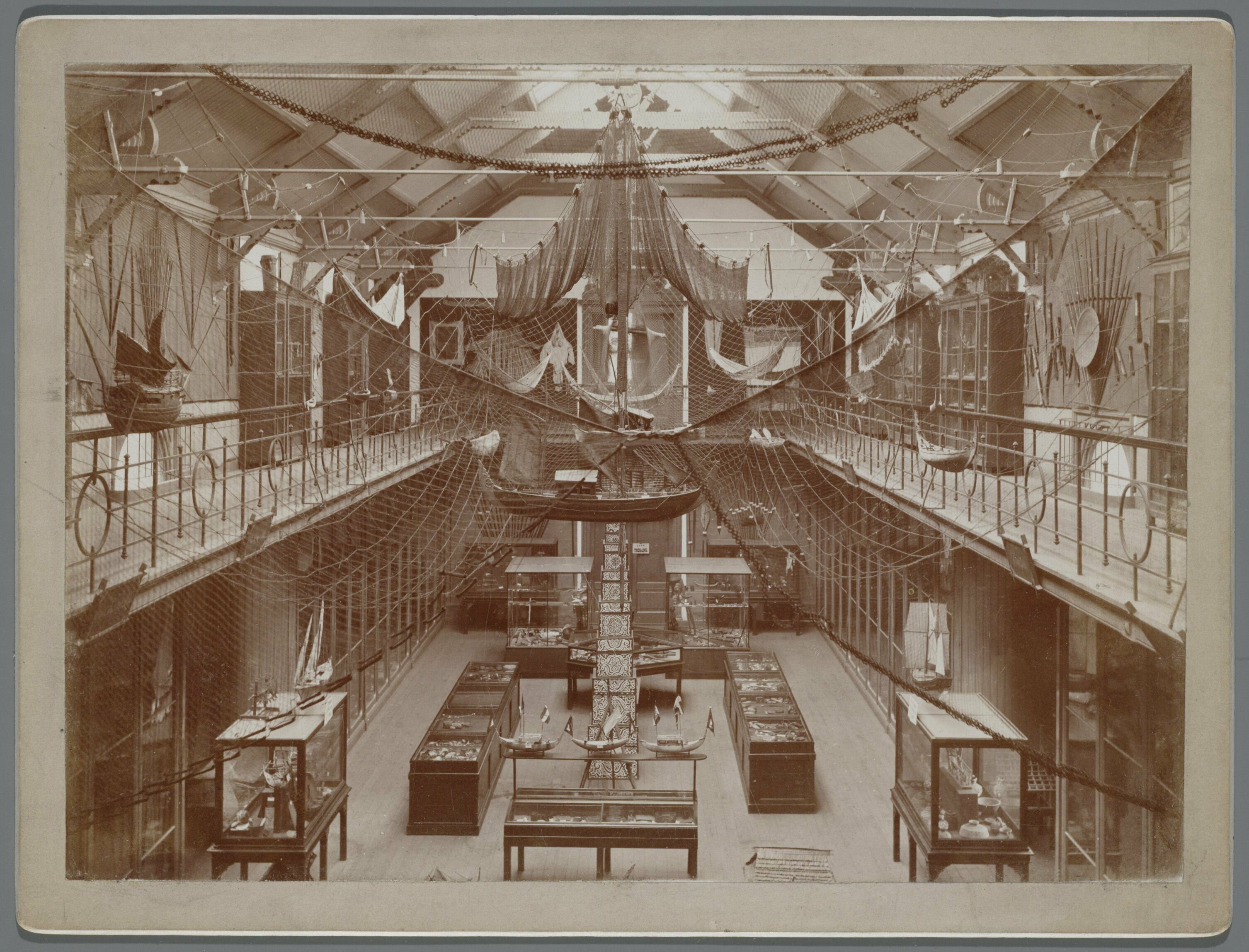History of the museum
The Artis Ethnographic Museum was founded in 1851 to house the collection of ethnographic objects of the Koninklijk Zoölogisch Genootschap Natura Artis Magistra, the royal zoological society. At the time it was not unusual for a zoo to also collect objects, as the rapidly changing sciences in the nineteenth century often focused on several areas of research at once. The interest both in other cultures, objects and customs and in plants, animals and geology was closely linked to the broader European colonial project.
Artis' ethnographic collection grew steadily throughout the nineteenth century and so a special museum building, the Volharding, was constructed in 1888. The building is still part of Artis Zoo today. In the late nineteenth century, the collection was expanded with objects from the Internationale Koloniale en Uitvoerhandel Tentoonstelling, also known as the World Exhibition, of 1883 and objects collected by the Nieuwe Afrikaansche Handels-Vennootschap. As such, the Artis Ethnographic Museum was closely linked to Dutch colonial relations.
From 1905 to 1913 the collection of the Colonial Museum in Haarlem was temporarily included in the collection of the Ethnographic Museum Artis but not long after the decision was made to transfer the collections to the yet-to-be-established museum of the Colonial Institute, which finally took place in 1921. It was not until 1926 that the museum of the Colonial Institute, now Wereldmuseum Amsterdam, opened its doors. To this day, the collection of the Ethnographic Museum Artis forms an important basis of the collection of the Wereldmuseum Amsterdam.
 Interior of the Artis Ethnographic Museum (Stadsarchief Amsterdam)
Interior of the Artis Ethnographic Museum (Stadsarchief Amsterdam)
Provenance research
The collection of the Artis Ethnographic Museum can be found within the collection of Wereldmuseum Amsterdam using the attribute 'TM-A'. The collection was originally brought together by a multitude of private individuals, including civil servants, missionaries, traders, other types of travellers and scientific societies. An important donor to the collection of the Ethnographic Museum Artis, for example, was the linguist Herman Neubronner van der Tuuk. Donations of objects to the Artis Ethnographic Museum, with the name of the donor, were listed in the 'Yearbook of the Royal Zoological Society Natura Artis Magistra'. The editions from 1852 to 1875 are available digitally on the Hathi Trust website (https://catalog.hathitrust.org/Record/007328956).
Archives relating to the Artis Ethnographic Museum are spread across several institutions. For example the general archives of the Koninklijk Zoölogisch Genootschap Artis Magistra are held at the Amsterdam City Archive under archive accession number 395. Inventory numbers that are relevant to the Artis Ethnographic Museum are: 1842-1860 Etnologisch Museum met insectarium, 1861-1873 Weekrapporten van het Etnologisch Museum, 1876-1905 Ethnografisch Museum en verzamelingen, 1906-1919 Stukken betreffende de vestiging van een Koloniaal Museum te Amsterdam [...] and 1909-1919 Vereeniging "Koloniaal Instituut ", opgericht in 1910.
Archives of the Colonial Institute relating to the Artis ethnographic collection are available through the National Archives. Inventory numbers 4395 and 7851-7858 (which are still held by the Royal Tropical Institute, KIT) refer to the collection and its transfer to the Colonial Museum in Amsterdam in 1926. According to a report by the National Museum of World Cultures, the archives of the Artis Ethnographic Museum have been digitalised by KIT and are available through the Media module of the World Museum's collection registration system. For specific questions about the Artis Ethnographic Museum collection and to view the archives, contact collectieinfo@wereldmuseum.nl.
Sources
Primary sources
Secondary sources
Related research aids
Keywords
Click on the button behind the keyword to start a new object search.
